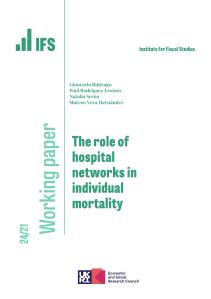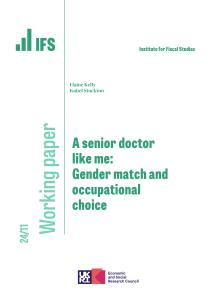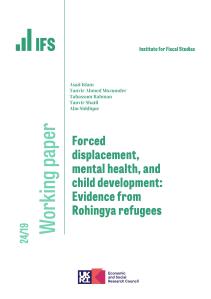The NHS has recently experienced a number of strikes by junior doctors. Hospital consultants are now also being balloted for strike action. A common argument against such strikes is the risk they pose to patients, despite preparations made by hospitals to mitigate any adverse impacts. But do doctor strikes actually cause worse outcomes for patients? There is surprisingly little evidence on this question, from the UK or elsewhere.
To help address this, in a new paper published in the Journal of Economic Behaviour and Organisation, we re-examined the impact of the 2016 junior doctor strikes in the English NHS. We focused on the final 48-hour strike (in April) that affected both elective and emergency care, and on the outcomes of emergency patients admitted during the strike. We find that patients treated in hospitals that were more exposed to the strike did not, on average, experience worse outcomes. However, black patients experienced worse outcomes than white patients when treated in more exposed hospitals.
Nationally, there were large changes in the number and composition of patients on strike days as hospitals cancelled activity and many patients stayed away. The characteristics of patients also changed: elective patients were on average older and sicker, while emergency patients were younger. These changes mean that simple comparisons of patient outcomes on strike days and non-strike days are potentially misleading. For instance, a younger mix of emergency patients on strike days could translate into lower mortality rates than on non-strike days. But this doesn’t necessarily mean that the strike was beneficial for patients.
Our analysis attempts to address these concerns by using differences in the pre-strike doctor workforce across different hospitals. Intuitively, hospitals that employed more junior doctors relative to consultants were more affected by the junior doctor strike than hospitals that employed a greater share of consultants. Consistent with this, we show that hospitals more reliant on junior doctors cancelled a greater amount of elective activity during the strikes. Our analysis uses this variation to tease out the effects of the strikes on patients.
Our headline finding is that in-hospital mortality rates and readmissions rates (whether patients have another emergency admission within 30 days) for emergency patients were no higher in hospitals that were more exposed to the strike. This suggests that, on average, hospitals were able to mitigate the immediate negative impact of being admitted to a hospital more exposed to the strikes. This lends support to the findings of previous observational studies that suggest the impacts of strikes on admitted patients are minimal.
However, we did find negative impacts of being exposed to the strike on some patient groups. While we found no difference by local-area socio-economic deprivation, we did find that black patients experienced significantly higher readmission rates in more exposed hospitals relative to white patients. In other words, in hospitals that were more reliant on junior doctors, the strikes caused an increase in readmission rates for black patients, but not white patients. We find no differences for Asian or other ethnicity patients.
Unfortunately, the data does not allow us to conclusively determine the mechanisms behind this unequal impact, but we can eliminate several potential explanations. These differences are not driven by black patients being admitted to different (more or less exposed) hospitals, as this difference between white and black patients occurs when looking at patients in the same hospitals. It was also not driven by differential changes in clinical severity between groups, or by changes in the amount of treatment received. This suggests that hospitals should be careful when responding to future strikes to ensure that inequalities in care quality do not develop as a result.
What does this mean for the current strikes? That the NHS avoided – on average – significant immediate harm to patients during the 2016 strikes is good news. It shows just how effectively hospitals can adapt to challenging conditions, and it might provide some comfort to those worrying about the impacts on patients in need of emergency care. But we should be cautious about drawing lessons from 2016 for the NHS in 2023. Waiting lists are longer, with greater pressure on hospitals to boost volumes of elective activity, and it remains unclear how cancellations affected elective patients who waited longer for treatment due to the strike. The effects of the pandemic continue to be felt across the service. Other staffing groups have also been on strike. These and other factors could make it much harder for hospitals to offset the impacts of junior doctor strikes – particularly if they continue for a prolonged period, and other staff become less able or willing to cover for absent staff. Our study adds new evidence, but can’t tell us how far strikes have to go before patient outcomes start to significantly deteriorate.
This article was first published in Health Service Journal and is reproduced here with kind permission.










